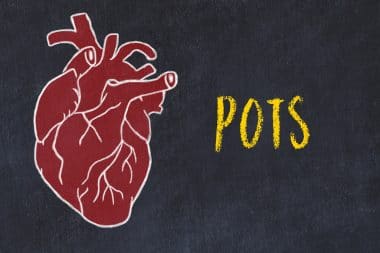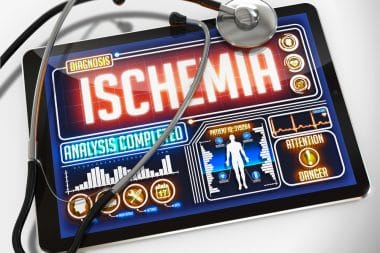In the event of a cardiac arrest emergency, bystanders only have minutes to act to help save the life of the victim. After calling 911, bystanders should begin performing CPR immediately to prevent the potential for permanent brain damage or death. In addition to CPR, the use of an automated external defibrillator (AED) can also assist the victim and improve their survival rate. By earning your CPR/AED certification, anyone can learn how to both perform CPR and how to safely use an AED.
But what exactly is an AED and how does it work? To better understand this device, we’re taking a closer look at this life-saving technology and how an AED actually works. We also look into how online CPR/AED certification courses can help you learn these important skills and gain the confidence to act if you find yourself in the midst of a medical emergency.
WHAT IS AN AED?
An AED (automated external defibrillator) is a small electronic device designed to restore a regular heartbeat to the victim of cardiac arrest or a heart attack. When the heart stops or the heartbeat becomes irregular, the body essentially needs to reset to restore the normal and healthy heart rhythm. This can be done by the small electric shock administered by an AED device. When waiting for medical personnel to arrive, properly using an AED for a cardiac arrest victim may be the difference between life and death.
Without even realizing it, you’ve probably seen quite a few AEDs. Positioned on walls in hospitals, schools, rec centers, and other public spaces, these devices are housed in small red boxes that are easily recognizable. Many organizations have pushed to make AEDs more accessible in a variety of spaces to combat the number of lives lost to cardiac arrest. Since a medical emergency could occur anywhere, having more AEDs available (and more bystanders trained on how to use them), is an effective way to save lives.
WHAT DOES AN AED DO?
So, how exactly does this small device work? Most people are amazed by how straightforward it is to effectively operate an AED. First, you must turn the device on. From there, the AED actually guides the bystander with visual and audio instructions. Ensuring that the victim is flat on their back, open their shirt and make sure that their chest is dry (as the operator of the device, you also don’t want to be in contact with water before turning it on).
Next, youÃ’ll attach the AED pads to the victim’s chest. Make sure that no other bystander, including yourself, is in physical contact with the victim before engaging. If the scene is clear, you can press the “analyze” button on the AED. This allows the device to scan for an irregular heartbeat. If one is detected, the AED will prompt you to deliver a minor electrical shock to the victim to reset the heart rhythm. When prompted, press the “shock” button to deliver the electric current. Begin performing CPR on the victim following the shock. Even if the AED did not advise you to give a shock, you should perform CPR until medical professionals are able to arrive at the scene.
HOW DO YOU LEARN HOW TO USE AN AED?
AEDs are designed to be used by anyone; however, this doesn’t mean anyone can simply pick one up and know how to use it both safely and effectively. After all, when using an AED, someone’s life may be in critical danger, which raises the stakes for everyone involved. In the midst of a medical emergency, would you want someone to simply wing it?
This is why AED certifications exist. Many medical certification programs exist that focus on CPR training and AED training. In fact, since both of these trainings are related, many programs offer combo CPR/AED training and certification. These courses are ideal for covering more ground and can even save you time and money.
BENEFITS OF ONLINE CPR/AED CERTIFICATION
Everyone is busy these days, which is one reason why some of us may avoid receiving CPR/AED certification. We all know how important these skills are, but when you can’t find time in the day, what are you supposed to do? Luckily, there’s a solution. More and more students are opting in for online CPR/AED classes. With these 100 percent online training classes, you can learn CPR and operating an AED from the comfort of your home. Talk about a convenient way to get certified.
These online courses also make it easier to earn your CPR/AED certification. Designed with you in mind, online certification classes can be started or paused at any time so that you can learn at your pace and on your schedule. This is ideal for anyone with an already hectic schedule or full-time job. Additionally, online CPR classes tend to be more cost-effective. Since these programs don’t need to spend money on renting our rec centers or hiring countless CPR instructors, they can often pass on the savings to their students.
CONCLUSION: WHAT DOES AN AED DO?
Every year, hundreds of thousands of lives are lost to cardiac arrest and this is just in the United States. With such an overwhelming figure, it may seem like there’s little that you can do to reduce this number. But that’s not true. One of the most effective things you can do is to learn how to perform CPR and how to effectively use an AED. Learning these important skills can give you the confidence and knowledge to act in the event of a medical emergency.
The most effective way to gain these skills is by enrolling in a CPR/AED certification course. With this specialized certification, you’ll ensure that you’re receiving the best information from the top instructors. With online CPR/AED training, you never even need to leave the comfort of your own home to learn how to perform CPR and use an AED. Do your part to make your community a safer place. Look into receiving your CPR/AED certification today.








Reply